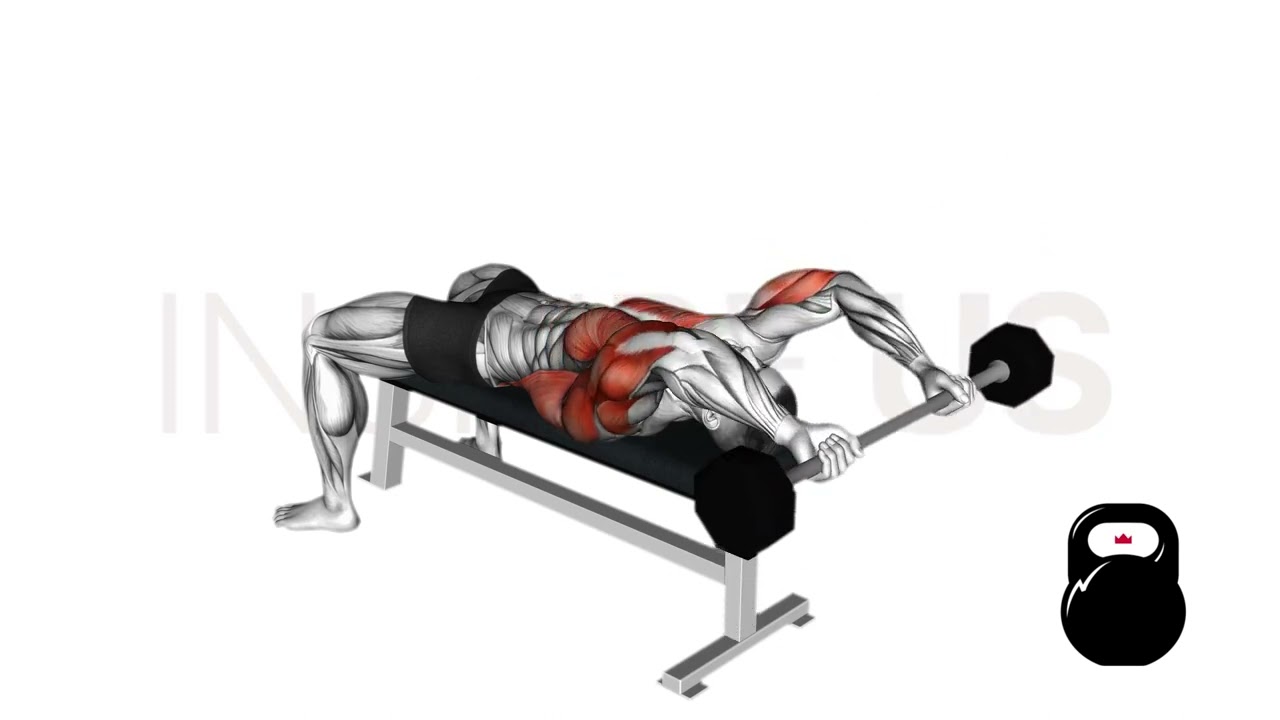Barbell Pullover: Benefits, Muscles Worked, and More
The barbell pullover - or simply “pullover” - is an exercise involving lying on your back and pulling a barbell over your head from beneath.
Its effectiveness at building both respective sides of the upper body has earned it a place in many bodybuilding and strength-building programs.
What is the Barbell Pullover?
The barbell pullover is a compound free weight exercise of the closed kinetic chain variety. It is often programmed as an accessory movement for moderate volume and a moderate amount of weight.
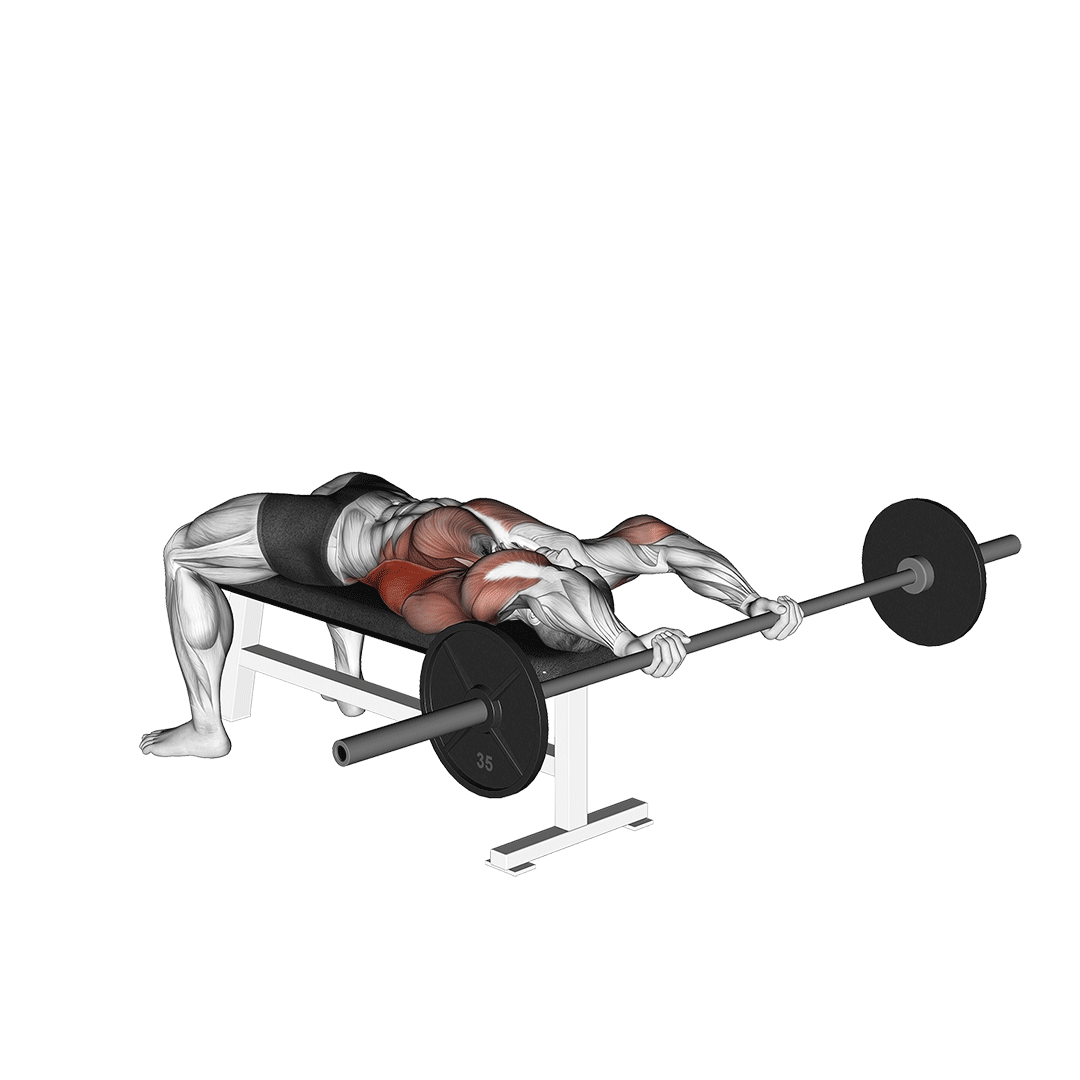
Barbell pullovers are seen as an effective workout for both the muscles of the chest, as well as those of the lats. While this can indeed make programming them a bit complicated, it is a boon for individuals participating in full body workouts.
What Equipment do Barbell Pullovers Need?
Because barbell pullovers are performed in a lying position with the barbell being drawn up from beneath the head, this exercise will also require an exercise bench alongside a loaded barbell.
For safety, barbell collars should also be used.
Who Should do Barbell Pullovers?
The barbell pullover is a safe and effective exercise, and is suitable for even novice weightlifters.
How to do Barbell Pullovers Correctly
To perform a repetition of barbell pullovers, the lifter will lie face-up atop an exercise bench, a loaded barbell held over their chest in both hands.
Keeping the elbows slightly bent, the lifter will then slowly lower the barbell behind (and beneath) their heads in a radial motion, squeezing their pectorals and lats as they do so.
Once they’ve reached the maximum range of motion of their shoulders or chest, they will draw the barbell back upwards along the same path.
When the barbell is back over the lifter’s body, the repetition is considered complete.
What Muscles do Barbell Pullovers Work?
Barbell pullovers are a compound exercise, meaning that multiple muscles are used at once.
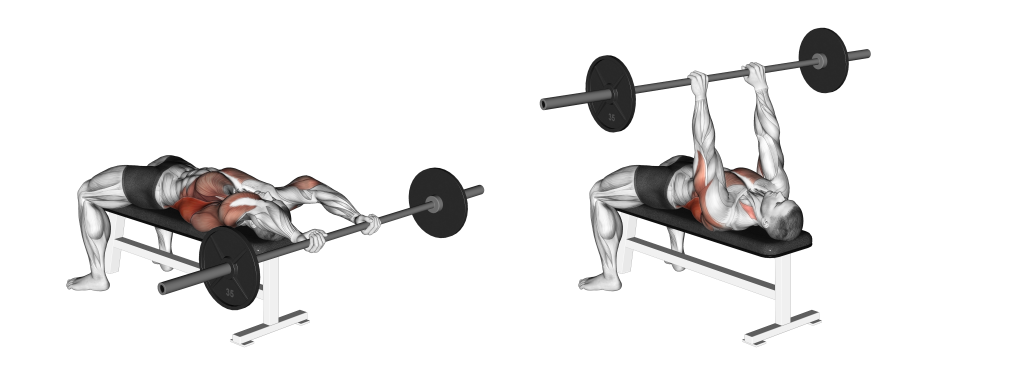
These muscles are divided according to their role within the movement, with dynamic contraction signifying a “mover” muscle, and static contraction making the muscle a “stabilizer”.
Primary and Secondary Mover Muscles
During a repetition of barbell pullovers, the latissimus dorsi and pectoral muscles act as the main sources of force. In addition, the teres major will be contracted in a secondary capacity.
Stabilizer Muscles
Apart from the mover muscles, the barbell pullover will also target the triceps brachii and the deltoids.
Unlike the mover muscles, the stabilizer muscles are not contracted in a dynamic fashion, and as such are unlikely to hypertrophy or develop significantly from the exercise.
What are the Benefits of Doing Barbell Pullovers?
Although barbell pullovers are unfortunately underutilized, there is no denying the benefits they offer - of which we’ve listed below.
Builds Back and Chest Musculature
The main benefit to performing barbell pullovers is their capacity to develop muscle mass and strength in the largest back and chest muscle groups.
The pectorals are notoriously difficult to target without also including the triceps or deltoids, and the lats require significant volume in order to truly train correctly.
As such, when programmed appropriately, the barbell pullover can be invaluable for training these muscles in an effective manner.
Reinforces Overhead Extension Mechanics
Among other biomechanical functions, the barbell pullover is also quite effective at reinforcing general overhead extension of the arms and shoulders - all without actually stretching the arms overhead.
Individuals who wish to improve their military press stability or otherwise improve their capacity to extend the arms overhead can use barbell pullovers as a reinforcement tool.
Of course, if you have a history of injury or are at risk of injury, consult a physician before performing the pullover for this purpose.
Synergizes With Many Compound Movements
The barbell pullover pairs particularly well with many common exercises of a similar emphasis. Movements like the pull-up, bench press or the upright row all target the same musculature from different angles and with different mechanics.
Structuring a training program with aspects like these are essential for maximizing muscular development and creating a functional physique.
Unique Angle of Resistance and Movement Pattern
The barbell pullover features a rather unique angle of resistance and movement pattern - two characteristics that make it effective as a method of targeting the lats and chest.
As mentioned previously, working a muscle in numerous angles and from different portions of its range of movement is excellent for development. The barbell pullover takes full advantage of this fact, working the lats and pecs in a manner that most other exercises do not.
Common Barbell Pullover Mistakes to Avoid
In order to perform the barbell pullover safely, avoid making the following mistakes.
Swinging the Barbell
The barbell pullover is an exercise based around muscular tension - especially in regards to the latissimus dorsi muscles. Swinging the barbell will not only negate much of this vital tension, but can also potentially injure the shoulder joints as well.
In order to maximize the benefits of the barbell pullover, ensure that each repetition is performed in a slow and controlled manner, with attention paid to maintaining tension in the chest and lats.
Insufficient Range of Motion
A common mistake made with the barbell pullover is performing it with an insufficient range of motion.
Because the exercise involves lowering a barbell beneath our line of sight, it can become difficult to gauge whether the appropriate range has been achieved. This can lead to poor recruitment of certain muscle groups or otherwise a greater risk of shoulder injury.
One good cue to ensure a full ROM is achieved is to feel the position of the upper arms. If they are parallel to the sides of the head, a full range of motion has likely been reached.
Alternatively, the lifter can gauge the level of tension in their lats. If their lats lose tension around the midpoint of the repetition, it's likely they’ve lowered the barbell too far down.
Bending the Elbows Excessively
Although some small amount of flexion is required to ensure the arms are not injured, bending them to an excessive angle can shift the focus of the exercise and potentially injure the lifter.
In order to perform the barbell pullover correctly, the lifter should strive to keep their arms as straight as possible while maintaining a slight bend in the elbows. This ensures that all the correct muscles are targeted, but that the elbows remain safe from injury as well.
Raising the Hips Off the Bench
Lifters moving a significant amount of weight may have trouble maintaining their position atop the bench during the mid-point of the barbell pullover. If the hips begin to slide or rise off the bench, it could indicate poor upper back mobility or simply that too much weight has been loaded.
In either case, an important cue to follow is to keep the hips (and glutes) against the bench throughout the entire repetition. Needing to move them is a sign that something is wrong in loading or mobility.
Barbell Pullover Alternatives
The barbell pullover is effective - there is no doubt about that. However, it isn’t always the correct exercise to pick.
In such cases, the following alternatives can act as a substitute in its place.
Dumbbell Pullovers
Having trouble with the shape of the barbell or its non-neutral grip? Try foregoing it for a dumbbell instead.
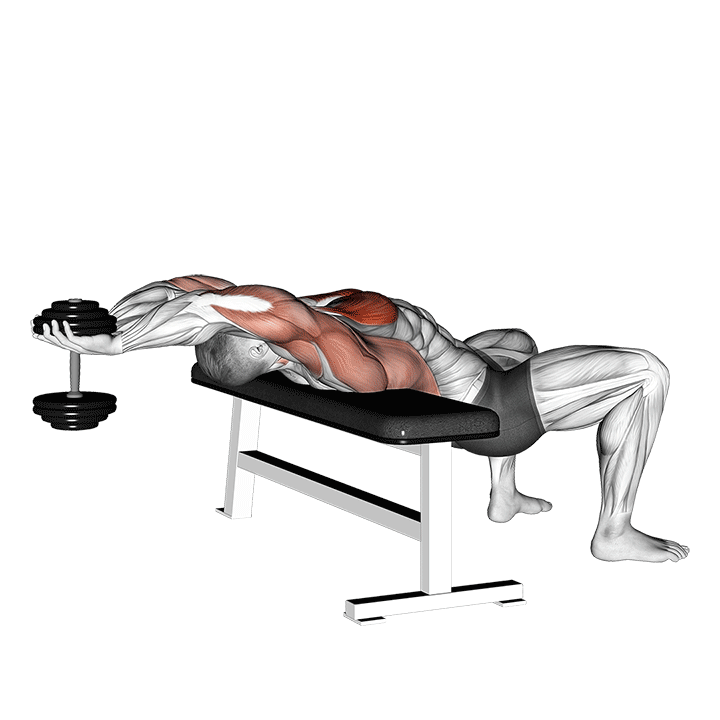
In all other aspects, the dumbbell pullover is identical to the barbell pullover, and may be performed as such.
Landmine Presses
The landmine press is an exercise of similar muscular recruitment, but instead works the trapezius rather than the latissimus dorsi.
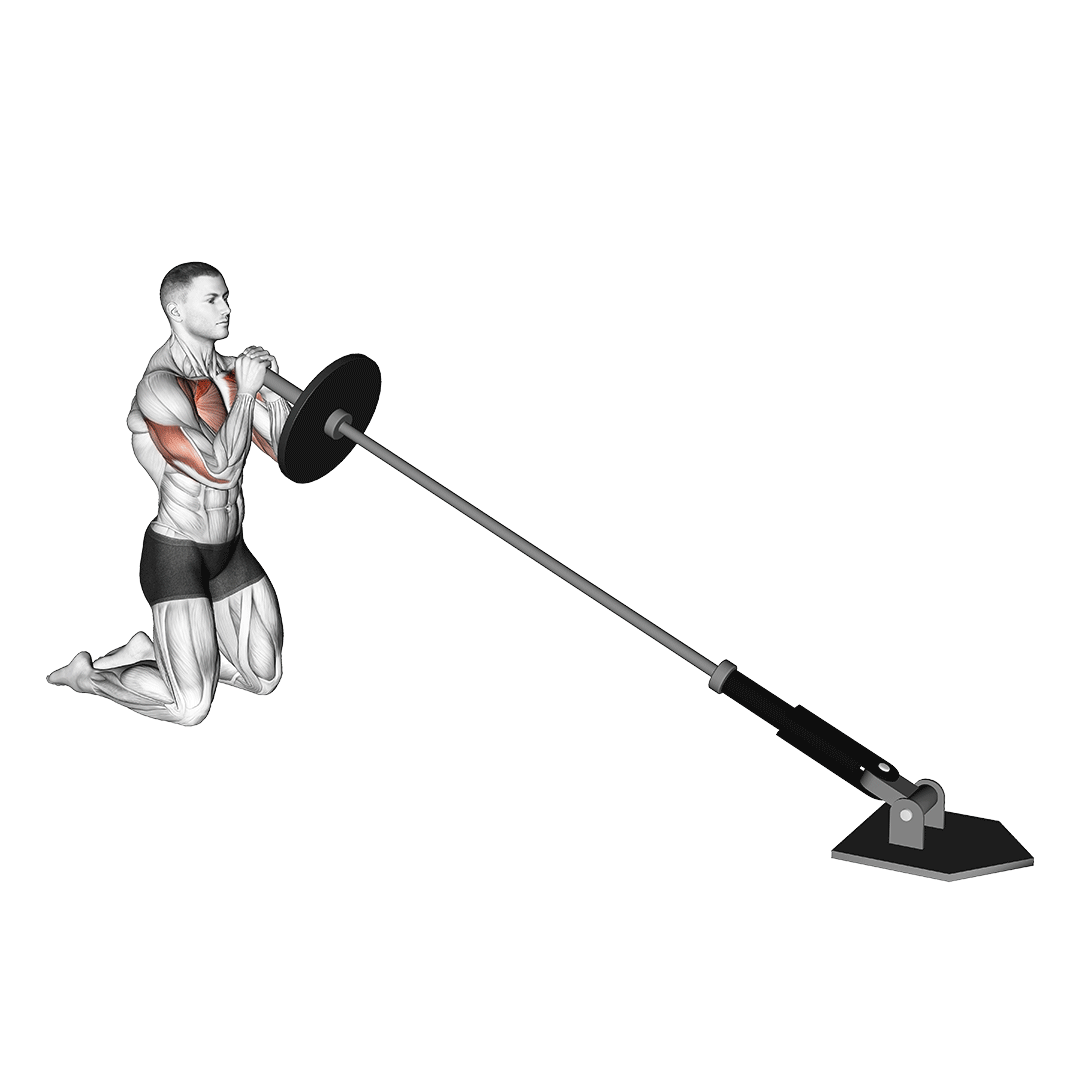
It involves the lifter pushing one end of a loaded barbell upwards as the other end remains in a landmine attachment, creating a unique angle of resistance that is distinct from both the barbell pullover and other chest press variations.
The landmine press is a good alternative to pick if you find the barbell pullover to target the lats too much, but wish to retain the same pectoral muscle stimulation nonetheless.
Renegade Rows
Renegade rows are yet another alternative to the barbell pullover with a similar recruitment pattern.
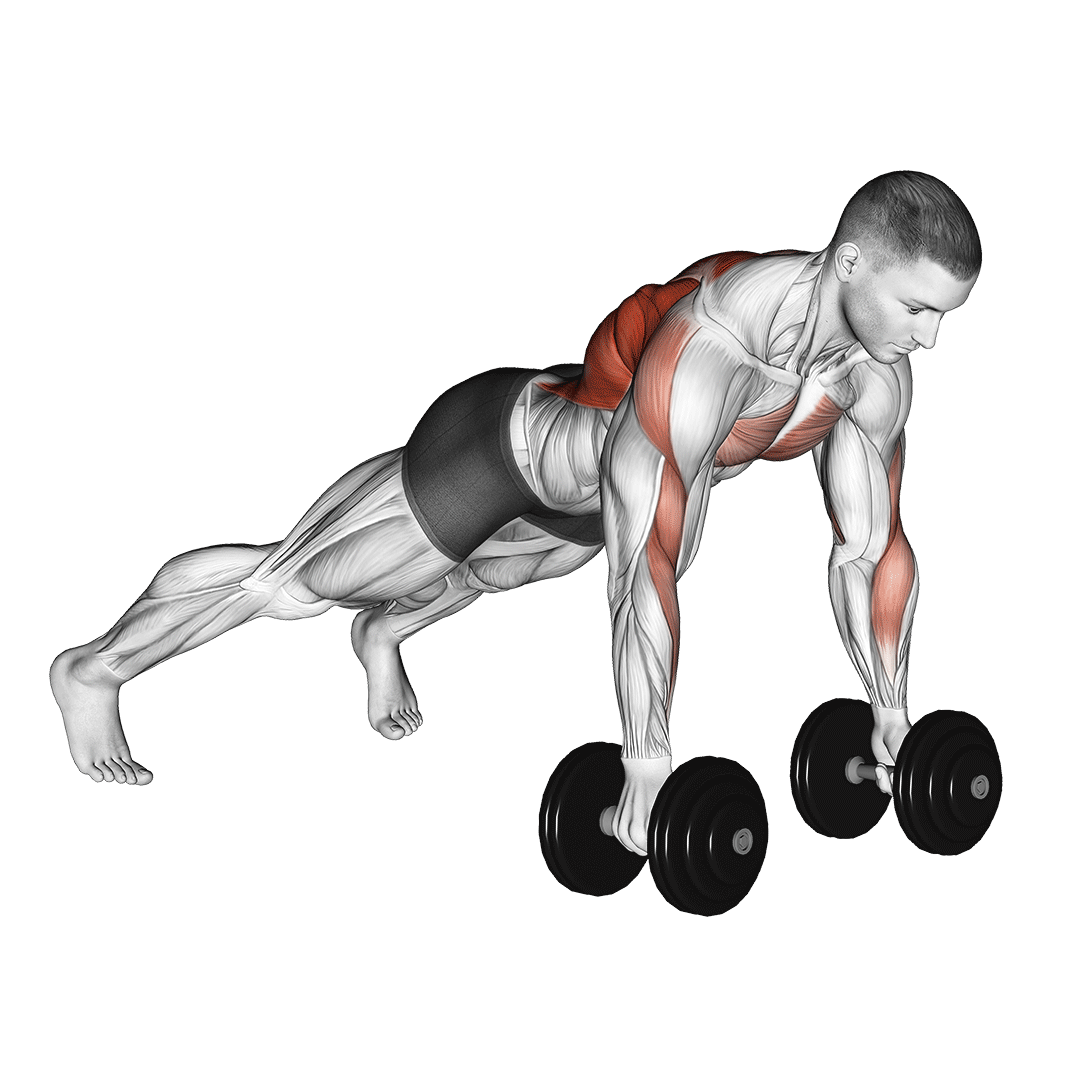
Although they differ quite widely in terms of intensity and general movement, both exercises target those of the chest and the back in a single repetition - meaning that renegade rows can replace barbell pullovers in a training program.
Renegade rows are a push-up variation where the lifter performs an otherwise ordinary push-up atop a pair of dumbbells, before proceeding to row these dumbbells once the push-up is complete.
Frequently Asked Questions (FAQ)
Is the Pullover for Chest or Back?
Both.
The pullover will target the latissimus dorsi alongside the pectoral muscles, making it unique in certain aspects.
What is the Purpose of a Pullover?
Pullovers are meant to strengthen the muscles of the chest and back, as well as reinforce overhead arm biomechanics.
Is the Pullover a Push or Pull Exercise?
It can be difficult to strictly categorize the pullover as either a push or pull exercise, since it features characteristics of both types of exercises.
However, going by name alone, one can assume it falls under the category of pull exercises.
A Few Reminders
Now that we’ve covered the most important aspects of the barbell pullover, it’s time to put what you’ve learned into practice.
Remember to program the pullover according to the purpose of your workout. While it is perfectly at home in a full body workout, not everyone follows a training program with that sort of training split.
The pullover should be placed either at the end of a chest workout, or somewhat earlier in a back workout. In addition, it is best to avoid intense pullover sets if the following day involves a training session that targets either muscle group.
References
1. Teixeira LFM, Gomes WA, DA Silva JJ, Magalhaes RA, Marchetti PH. Differences Between Pullover and Pulldown Exercises on Maximal Isometric Force and Myoelectric Activity in Recreationally-Trained Men. Int J Exerc Sci. 2022 Jun 1;15(4):797-807. PMID: 35992501; PMCID: PMC9362894.
2. Campos YAC, da Silva SF. Comparison of electromyographic activity during the bench press and barbell pullover exercises. Motriz. 2014;20(2):200–205
3. Campos YAC, Rodrigues HL, da Silva SF, Marchetti PH. The use of barbell or dumbbell does not affect muscle activation during pullover exercise. Rev Bras Med Esporte. 2017;23(5):386–389.

